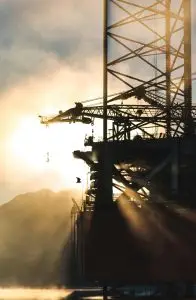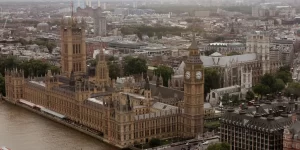The new boundary changes mean the next general election will be fought across new constituencies. Drawing on recommendations from independent Boundary Commissions, the new changes aim to enhance constituency equality, but they also have an impact on the upcoming General Election.
Of the 650 seats in the House of Commons, only 65 seats remain unchanged. The electorate for each new seat must fall between 69,724 and 77,062.[1] Seventy-six seats, including Clacton, have been extended beyond their current boundaries, while seventy-three seats, such as Sheffield Central, have been reduced in size to balance the number of electors in each constituency.[2] Notably, England has gained ten seats, increasing from 533 to 543, whereas Scotland has lost two seats, decreasing from 59 to 57, and Wales has experienced a substantial reduction from 40 to 31 seats. Northern Ireland, however, remains unchanged with 18 seats.[3]
Pollsters, utilising 2019 results, have estimated how these new constituencies would have voted in the absence of an actual election taking place in these freshly drawn-up seats. Notional results compiled by experts indicate that, if the last election had been fought on the new boundaries, the Conservative majority would be 14 seats larger. Conversely, Labour’s total decreases by two to 201. Liberal Democrats drop from 11 to 8 seats, and Plaid Cymru loses two of its four seats.[4]
For the upcoming General Election, the critical figure is 326 – the number of seats needed for a majority. The increased Conservative advantage heightens the challenge for Labour, as a notable swing of 12.7% or 125 seats is now required for Labour to secure an overall majority. This is larger than the 10.2-point swing from the Tories that Tony Blair achieved with his landslide victory in 1997, and more than double the swing achieved at any other election since 1945.[5]
Crucial battles against the SNP in Scotland are pivotal for Labour’s success. Several SNP seats are vulnerable, and a swing of 12 points in current polling could result in Labour gaining as many as 23 seats. Not since the 1950s has Labour formed a Government with less than 40 MPs in Scotland. Achieving this under the new boundaries demands a massive 25.1% swing from SNP to Labour.[6]
Top politicians also face uncertain fates, a report last week suggested that 11 Cabinet ministers would be set to lose their seats if the election took place now.[7] Chancellor Jeremy Hunt risks a loss to the Lib Dems in the newly created Godalming and Ash and the Lib Dems also have opportunities against Justice Secretary Alex Chalk in Cheltenham and Levelling Up Secretary Michael Gove in Surrey Heath. Sir Iain Duncan Smith’s majority has been reduced to 1,262, which makes him highly vulnerable to losing to Labour in Chingford and Woodford Green.[8]
The boundary changes have reshaped electoral geography and will have an on the outcome of the next general election. The next boundary review will take place in October 2031.
[1] Boundary Commission for England, ‘Boundary Commission for England publishes final recommendations for new Parliamentary constituencies’, June 2023, Link
[2] The Guardian, ‘UK general election: find your new constituency – and see how it would have voted in 2019’, January 2024, Link
[3] BBC News, ‘Parliament: Shake-up of England’s electoral map outlined’, June 2021, Link
[4] The Guardian, ‘UK general election: find your new constituency – and see how it would have voted in 2019’, January 2024, Link
[5] Sky News, ‘Constituency boundary changes give Keir Starmer a tougher route to Number 10 – find out why with our swingometer’, January 2024, Link
[6] Sky News, ‘Constituency boundary changes give Keir Starmer a tougher route to Number 10 – find out why with our swingometer’, January 2024, Link
[7] The Telegraph, ‘Jeremy Hunt among 14 Tory big beasts on course to lose their seats’, January 2024, Link
[8] The Telegraph, ‘Jeremy Hunt among 14 Tory big beasts on course to lose their seats’, January 2024, Link




